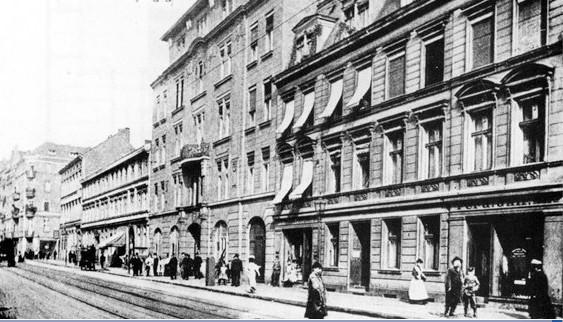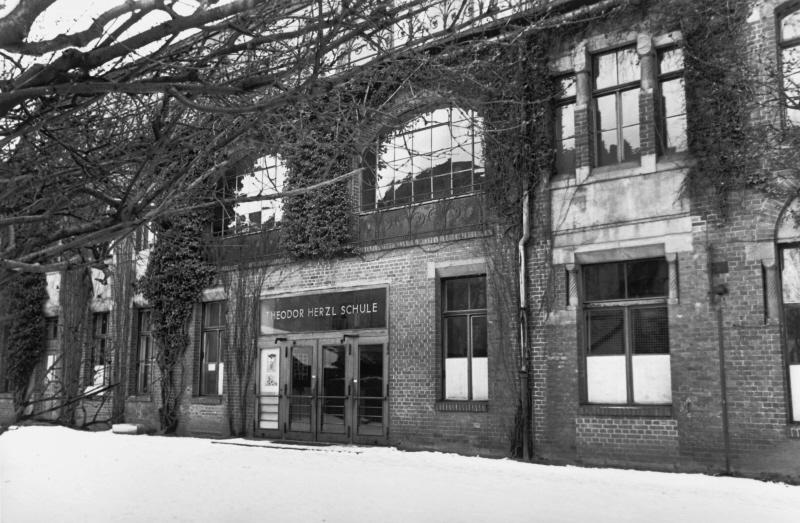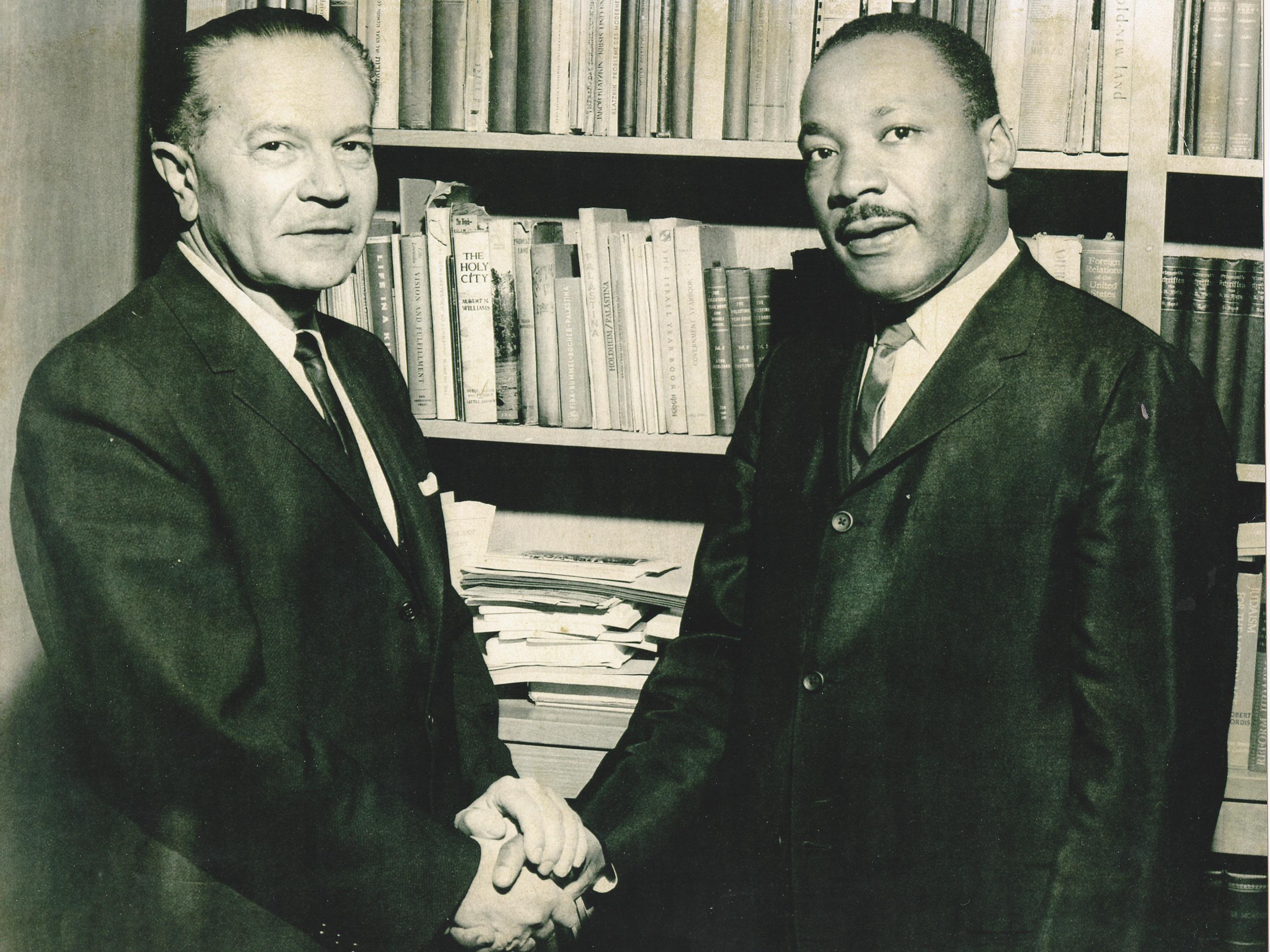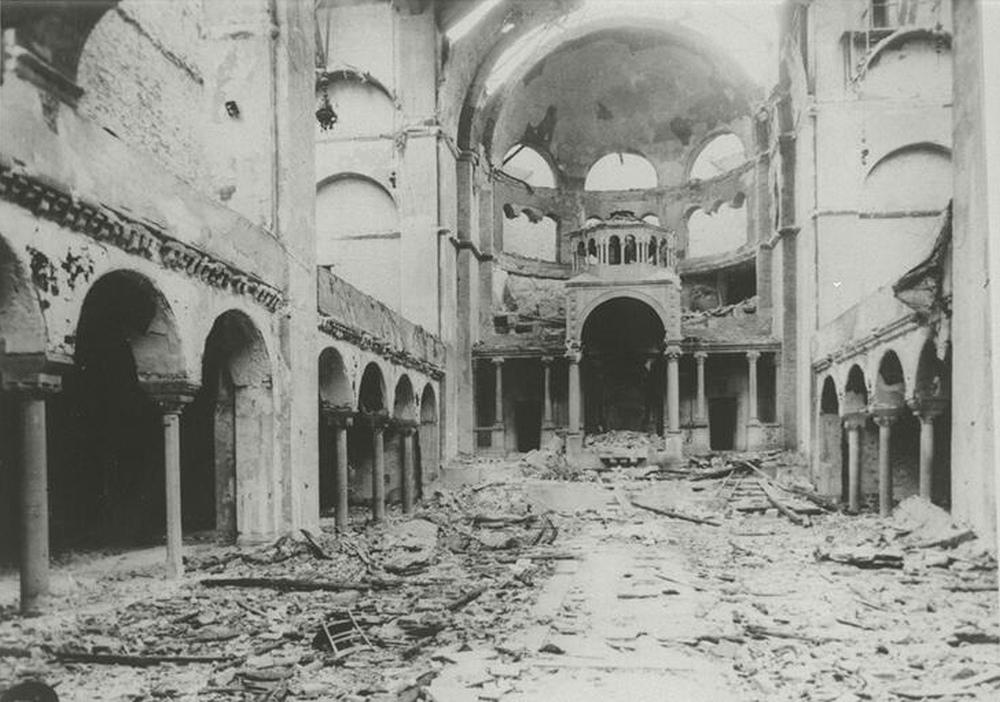Adass Yisroel shul and kahila
Testimony part 1 — the Berlin years
Now we get to the contents of the Margot Dränger interview where we will learn all the details of her story. This is the first installment, part one of six.
Family
Margot Lieblich was born in Berlin in October 1922, the only child of Leiser Leon Lieblich and Chana Lea Ringel. They had both been born in the Galician town of Nisko in the 1890s but had lived since childhood in Berlin.
And here is the first bit of interesting family information. Margot's two grandmothers were sisters, Perl Jacobi (who was married to Hirsch Ringel) and Chaja Jacobi (who was married to Elias Lieblich). Thus, Margot's parents were first cousins.
"Back then it was a good thing that you got married in the family," Margot comments.
Her parents married in Berlin in 1920. They lived in the western end of the heavily Jewish Spandauer Vorstadt, adjacent to the orthodox Adass Yisroel synagogue and school. Margot refers to it as the Tiergarten district because it was not far across the River Spree to the famous park.
The family lived very comfortably in a "noble house" apartment building on Linienenstraße. Among the neighbors were a count and a banker. Leiser dealt in luxury paper goods—stationery. Later he also owned a ready-to-wear clothing business, another detail that resonates with our family history since Hermann Ringel, our grandfatehr who was Chana's first cousin, was also a clothing manufacturer.
Margot's mother helped with the business, and she had plenty of household help. There were a maid, a nanny and a chauffeur. The family vacationed three or fours times a year. "We had everything you could want," Margot says.
Margot's maternal grandfather Hirsch Ringel died before she was born, but she knew her grandmother Perl very well. She lived nearby and visited the Lieblich apartment every day until she died in 1937.
On the father's side, the elders had remained in Poland. The grandfather died in 1930 but the grandmother lived until her murder in 1942. This was Chaja Jacobi Lieblich, the sister of Perl. Chaja will figure in some of the events in future chapters. Several other of Chaja's children, Margot's uncles and aunts, perished in Lemberg.
Schooling
Margot attended German elementary school and one year of high school before rising anti-Semitism drove her to withdraw, whereupon she began attending the Theordor-Herzl-Schule, where our mother was also a young student.
"In the Volkschule, we had to sing the Horst Wessel song every morning. And then we had to get up and say "Heil Hitler.” And I was bullied [by the teachers], Margot recalls.
The Theodor Herzl School was in Charlottenburg on the Kaiserdamm. It was a Zionist, progressive institution, having been founded in the early 1920s. During the Nazi years, it was directed by the former Montessori teacher Paula Fürst.
When our mother Helga Ringel began kindergarten there in 1930, and for the next three years, most of the students were from families with a Zionist bent. However, Margot was among the influx of other Jewish children who enrolled at Theordor Herzl in 1934.
Margot was a student there for four years until 1938. She remembers the hours spent studying Hebrew. She had friends and participated in Maccabi, the Jewish sports and social organization. She recalls the progressive rabbi at the school, Dr. Max Nussbaum, who went on to a prominent career in the United States.
The Lieblich family retained its Jewish identity but was equally invested in German culture, especially Margot's mother who admired all things German. This is the Ringel daughter, Chana, the youngest daughter of Hirsch and Perl, who was the Germanophile.
"Listen, in our family, we could never imagine what Hitler was doing and what the German people would do."
Her first taste of that were those bully teachers in 1933. She takes care to observe that they were Sudeten Germans. Afterward, she experienced bans on park benches and cinemas. Jews could not sit in cafes. Soon, the family would have to let go its household staff, banned by law from employing Aryans.
Emigration
Margot's father considered emigration elsewhere, but he had roots and assets in Poland and he did not imagine that Hitler would invade Poland or the USSR. By late 1938, he was far along in the process of transferring his wealth out of Germany. He intended to resettle in Krakow.
A Polish count and a South American diplomat assisted in moving money out of Germany to Poland.
Then came the Poland Action in October, when Polish-born German Jews were forced across the border at Zbaszyn, and the terrible events of Kristallnacht that followed two weeks later.
Margot remembers that day well. She was at the home in Charlottenburg of an Armenian woman from whom learning to make hats. (Now that she was out of school, her mother felt that she should be learning a trade.)
Just down the block from the lady's apartment building, the magnificent Fasanenstrasse synagogue was set aflame. (It had already been closed two years earlier.) All of the synagogues in Berlin were burned. The windows were smashed in all the shops.
Margot stayed at the hat maker's all afternoon, and made her way home before dark.
She remembers people who went suddenly absent. One friend left on a Kindertransport. The father of another friend was arrested and set to Oranienburg, the local Berlin concentration camp. Her Polish-born uncle Simcha, who lived with the family, was kept hidden by the Leiblich's former cleaning lady.
In March 1939, Leiser left Berlin to set up his affairs in Krakow. Chana was back in Nisko with Ringel relatives. In July, equipped with a false Polish identity card, Margot went by train to Sopot in the Danzig Free State, and from there entered Poland. She reached her father in Krakow in early August, and they were joined there by her mother.
On September 1, Germany invaded Poland. There was general panic and many Jews tried to flee to Hungary or elsewhere. Having just uprooted himself to come to Krakow, Leiser had no intention of leaving. Maybe he would be sent to a work camp or something, but what was the worst that could happen?
End of Part 1




